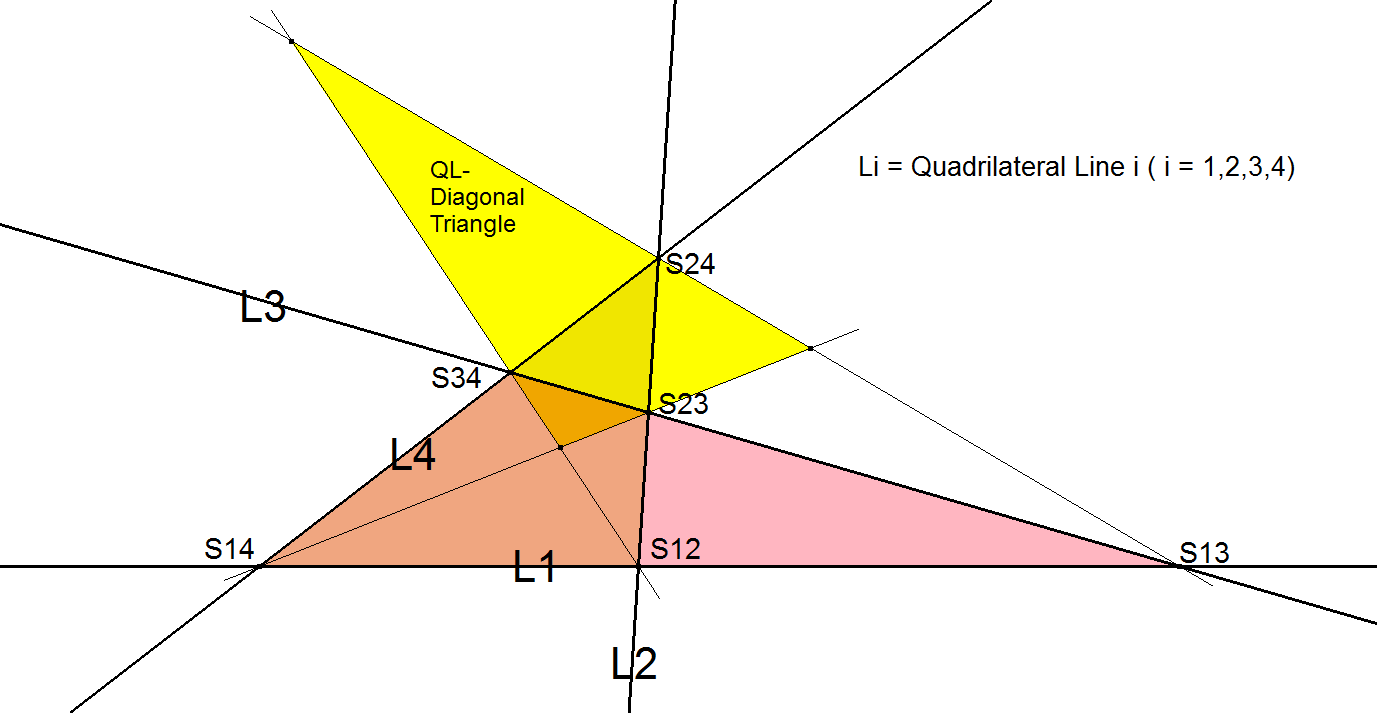QL-Tr1: QL-Diagonal Triangle
The Diagonal Triangle of the Quadrilateral (L1, L2, L3, L4) is the Triangle bounded by lines S12.S34, S13.S24, S14.S23, where Sij = intersection point Li ^ Lj, where i and j are different numbers and ∈ (1,2,3,4).
The connection of the intersection points of 2 adjacent lines and the intersection point of the remaining 2 lines produces a side of the QL-Diagonal Triangle. By doing this for all 3 possible combinations of 2 sets of 2 adjacent lines the QL-Diagonal Triangle is produced.

Area QL-Diagonal Triangle in CT-notation
4 l2 m2 n2 Δ / ((l m – l n – m n) (l m + l n – m n) (l m – l n + m n))
Radius2 Circumcircle QL-Diagonal Triangle in CT-notation
l2 m2 n2 (a2 l2 – a2 l m – b2 l m + c2 l m + b2 m2) (a2 l2 – a2 l n + b2 l n – c2 l n + c2 n2) (b2 m2 + a2 m n – b2 m n – c2 m n + c2 n2) / (4 Δ2 (l m – l n – m n)2 (l m + l n – m n)2 (l m – l n + m n)2)
Area QL-Diagonal Triangle in DT-notation
S / 2
Radius2 Circumcircle QL-Diagonal Triangle in CT-notation
a2 b2 c2 / (4 S2)
Properties
- The QL-Diagonal Triangle is the AntiCevian Triangle of each of the 4 Component Triangles Li.Lj.Lk, where Ll is the perspectrix and where (i,j,k,l) ∈ (1,2,3,4).
- QL-Tr1 is self-polar wrt every conic inscribed in the Reference Quadrilateral.
Estimated human page views: 563
